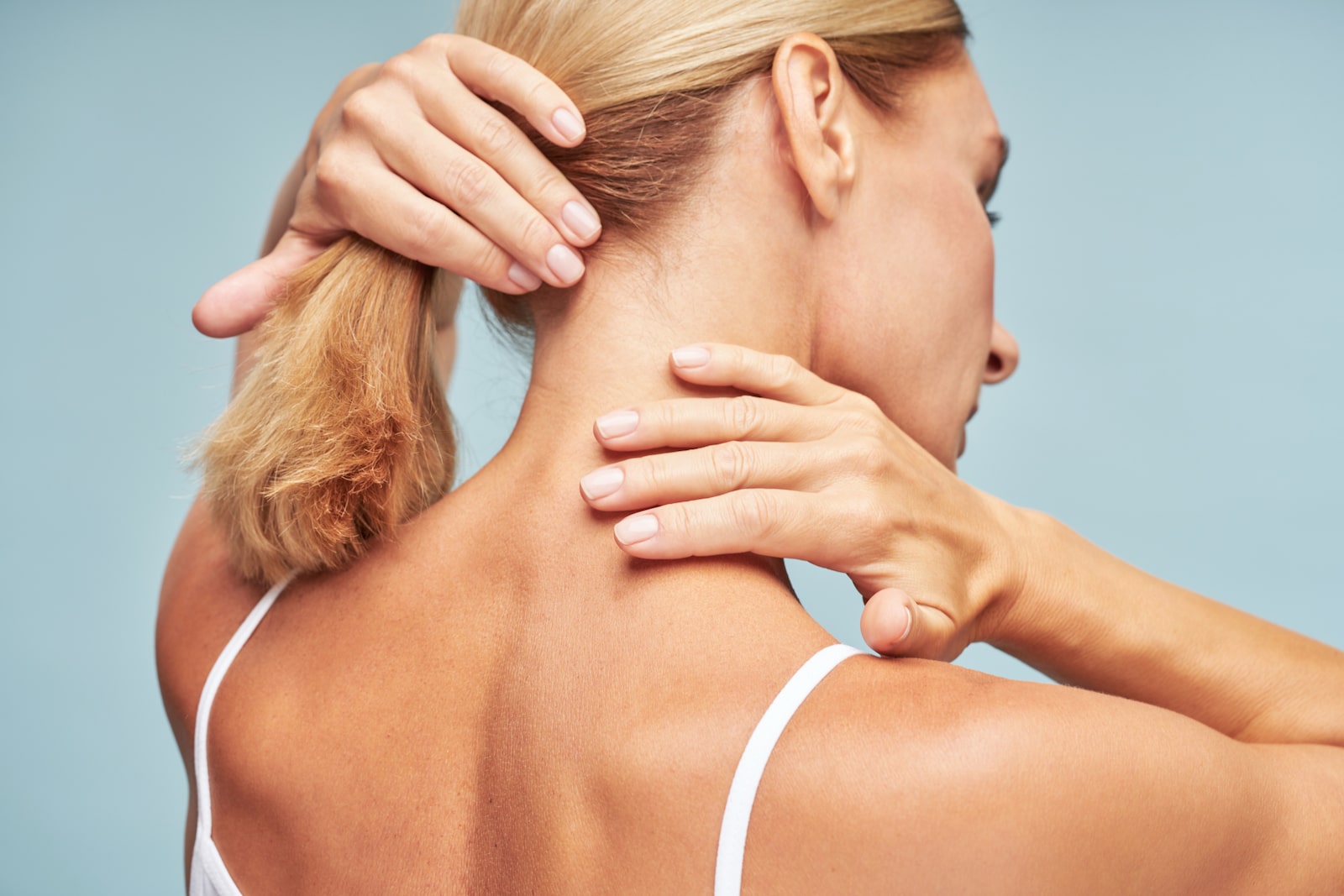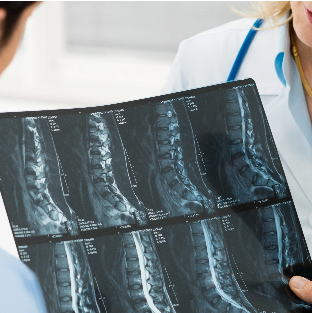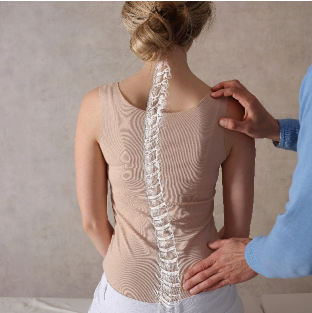The human spine is a remarkable and complex structure, essential for both mobility and support. It comprises vertebrae, discs, and nerves, playing a pivotal role in our daily lives. Among the common conditions affecting the spine's curvature, an imbalance in lordosis and kyphosis are prominent. This comprehensive guide aims to delve deep into the distinctions, causes, symptoms, and treatment options for imbalanced lordosis vs. kyphosis, providing a thorough understanding of these spinal curvatures.
Understanding Lordosis: Curvature and Its Implications
Let's begin by exploring lordosis, characterized by an inward curvature of the spine. Typically observed in the lumbar (lower back) and cervical (neck) regions, it is important to note that lordosis is a natural and important part of spinal anatomy. Our spines are balanced to a specific range of lordotic curvature, based on your own individual skeletal anatomy. Too excessive or too little lumbar or cervical lordosis, however, can impact overall health and posture significantly.
Understanding Kyphosis: Beyond A Hunched Back
In contrast, kyphosis is marked by an outward curvature of the spine, and is naturally seen in the thoracic spine. Kyphosis is also a natural element to spinal anatomy, but when occurring out of balance to the body’s natural proportions, it can lead to a hunched-back appearance. Kyphosis can also occur in the lumbar spine and cervical spine in severe cases. This segment aims to provide a comprehensive understanding of the various types of kyphosis, their underlying causes, and their implications for an individual's health.
Kyphosis vs. Lordosis
While both kyphosis and lordosis pertain to alterations in the curvature of the spine, these conditions are distinctly unique in their characteristics and impact. Let's delve into this comparative exploration to gain a clearer understanding of these two spinal curvatures.
Symptoms and Diagnosis
While both lordosis and kyphosis affect the spine, their symptoms are quite distinct. Recognizing these symptoms is crucial for early detection and appropriate treatment. Below, we will outline the key symptoms associated with each condition and discuss the diagnostic procedures employed by healthcare professionals to accurately identify imbalanced lordosis or kyphosis.
Symptoms of Lordosis:
- Exaggerated Inward Curve: The primary symptom of imbalanced lordosis is an exaggerated inward curve of the spine, typically in the lower back (lumbar lordosis) or the neck (cervical lordosis). This can result in a pronounced arching of the affected area.
- Back Pain: Individuals with lordosis may experience chronic or intermittent lower back pain, which can be exacerbated by prolonged standing or walking.
- Postural Changes: lordosis can lead to noticeable postural changes. Some may appear to have a swayback posture with their buttocks pushed out, and lower back and belly pushed forward.
- Muscle Imbalances: Muscle imbalances in the back and core may develop, leading to discomfort or muscle spasms.
- Nerve Compression: In severe cases, nerve compression can occur, resulting in radiating pain, tingling, or weakness in the legs.
Symptoms of Kyphosis:
- Hunched Back: The hallmark symptom of kyphosis is a visibly rounded or hunched back, often likened to a "hump" in the upper back or thoracic region.
- Back Pain: Individuals with kyphosis may experience upper back pain, which can worsen with prolonged sitting or standing.
- Limited Mobility: Reduced flexibility and limited range of motion in the spine are common, especially in more severe cases.
- Muscle Fatigue: The muscles supporting the spine may become fatigued due to the abnormal curvature, leading to discomfort.
- Breathing Difficulties: In some instances, severe kyphosis can compress the chest cavity, affecting lung function and causing breathing difficulties.
Diagnosing imbalanced lordosis and kyphosis typically involves a comprehensive evaluation by a healthcare professional. The diagnostic process may include:
- Physical Examination: A thorough physical examination, including a postural assessment, is conducted to identify abnormal spinal curvatures.
- X-rays: X-ray images are essential for visualizing the spine's curvature and determining the degree of lordosis or kyphosis.
- MRI or CT Scan: In certain cases, magnetic resonance imaging (MRI) or computed tomography (CT) scans may be necessary to assess any nerve compression or other underlying issues.
- Neurological Assessment: If nerve compression is suspected, a neurological assessment may be performed to evaluate sensory and motor functions.
- Medical History: A detailed medical history, including any family history of spinal conditions, is essential for understanding potential risk factors.
- Measurement of Curvature: Specialized tools and measurements may be used to quantify the degree of curvature, helping determine the severity of the condition.
Accurate diagnosis is critical for developing an effective treatment plan tailored to the specific needs of individuals with imbalanced lordosis or kyphosis. If you suspect you may be experiencing symptoms of either condition, it is advisable to seek medical evaluation and guidance promptly.
Causes and Risk Factors
Understanding the causes of imbalanced lordosis and kyphosis is paramount for prevention and effective treatment. In this comprehensive section, we will delve into the various factors that contribute to the development of these spinal curvatures. By exploring genetic predisposition, lifestyle choices, and underlying health conditions, we aim to provide you with a comprehensive understanding of how these conditions can manifest.
Genetic Predisposition
- Family History: Genetics can play a significant role in the development of spinal curvatures. If you have a family history of imbalanced spinal curvatures, lordosis or kyphosis, you may be at a higher risk of inheriting these conditions.
- Congenital Factors: In some cases, individuals are born with spinal abnormalities that predispose them to develop imbalanced lordosis or kyphosis later in life.
Lifestyle Choices
- Poor Posture: Maintaining good posture is crucial for spinal health. Habitual poor posture, such as slouching or excessive arching, can contribute to the development of these conditions over time.
- Lack of Physical Activity: A sedentary lifestyle with limited physical activity can weaken the muscles that support the spine, making it more susceptible to curvatures.
- Obesity: Excess body weight can place added stress on the spine, potentially leading to curvature issues.
- Improper Lifting Techniques: Incorrect lifting techniques, especially when lifting heavy objects, can strain the back and increase the risk of spinal curvatures.
Underlying Health Conditions
- Osteoporosis: Weakening of the bones, often associated with aging, can contribute to the development of kyphosis as the vertebrae become more susceptible to compression fractures.
- Neuromuscular Disorders: Certain neuromuscular conditions, such as muscular dystrophy or cerebral palsy, can affect muscle control and contribute to the development of spinal curvatures.
- Scoliosis: Individuals with scoliosis (a lateral curvature of the spine) may also be at an increased risk of developing imbalanced lordosis or kyphosis as a secondary condition.
Other Causes and Risk Factors
- Spinal Trauma: A history of spinal injuries or trauma can alter the spine's alignment, potentially leading to the development of curvatures.
- Degenerative Disc Disease: With age, the intervertebral discs between the vertebrae may degenerate, affecting spinal alignment.
- Hormonal Imbalances: Some hormonal imbalances, such as those associated with endocrine disorders, can impact bone health and contribute to spinal curvature issues.
By gaining a deeper understanding of these contributing factors, you can take proactive steps to reduce your risk of developing imbalanced lordosis or kyphosis. Early intervention and lifestyle adjustments can play a crucial role in maintaining spinal health and preventing the progression of these condition
Treatment and Management
The approach to treating and managing spinal imbalances in lordosis and kyphosis is multifaceted, taking into account the severity of the condition and its underlying causes. Here you can explore a wide range of treatment options, from conservative approaches to surgical interventions, to empower you with the knowledge needed to effectively manage imbalanced lordosis vs. kyphosis.
Conservative Approaches
- Physical Therapy: Physical therapy is often a cornerstone of treatment. Specially designed exercises and stretches can help improve muscle strength and flexibility, promoting better spinal alignment.
- Postural Training: Learning proper posture and ergonomic practices can prevent further curvature progression and alleviate discomfort.
- Bracing: In some cases, orthotic devices or braces may be prescribed to provide external support and prevent worsening of the curvature, especially in adolescents with growing spines.
- Pain Management: Pain management techniques, such as medications, heat/cold therapy, or pain-relieving injections, can be utilized to alleviate discomfort associated with imbalanced lordosis or kyphosis.
Surgical Interventions
- Spinal Fusion: In severe cases, spinal fusion surgery may be recommended. This procedure involves fusing vertebrae together to stabilize the spine and correct curvature. Metal rods, screws, or bone grafts may be used.
- Vertebral Osteotomy: This surgical technique involves removing or reshaping portions of vertebrae to correct the curvature.
- Decompression Surgery: If nerve compression is a concern, decompression surgery may be performed to relieve pressure on the spinal cord or nerves
Conclusion
As you ponder the insights shared within this guide, remember that you're not alone in this journey. Dr. Jeremy Smith, a renowned Orange County Spine Surgeon, stands ready to offer his expertise and guidance. If you or a loved one are experiencing the challenges of spinal imbalances to lordosis or kyphosis, or if you simply seek a consultation to ensure your spinal health, take that crucial step forward.
Contact Dr. Jeremy Smith, Orange County Spine Surgeon, today to schedule a consultation. With his years of experience, commitment to patient well-being, and dedication to innovative treatments, he is your partner in your pursuit of spinal health excellence. Together, you can pave the way to a future where spinal curvatures are not limitations but merely chapters in your story of resilience and triumph.
Don't let spinal curvatures define your journey. Seize the opportunity to embark on a path toward a healthier, more vibrant life. Contact Dr. Jeremy Smith, and take the first step today.
Your spinal health, your quality of life, your future—it's all within your grasp.
Frequently Asked Questions
What distinguishes lordosis from kyphosis?
Lordosis refers to an excessive inward curvature of the spine, typically in the lower back (lumbar lordosis) or the neck (cervical lordosis). This condition causes the affected area to arch inward more than usual, resulting in a swayback appearance. It often leads to postural changes, back pain, and muscle imbalances. Lordosis is characterized by an exaggerated inward curve, and its primary feature is the concave curvature.
On the other hand, kyphosis is characterized by an excessive outward curvature of the spine, often observed in the upper back or thoracic region. This condition results in a rounded or hunched-back appearance, commonly referred to as a "hump." Kyphosis can lead to upper back pain, limited mobility, and muscle fatigue. Unlike lordosis, kyphosis is characterized by a convex curvature, with the spine curving outward.
Can exercise help reverse lordosis or kyphosis?
Exercise can be beneficial for individuals with imbalances to their lordosis or kyphosis, but it's essential to understand that exercise alone typically cannot completely reverse these spinal curvatures. However, targeted exercises and physical therapy can help strengthen the muscles supporting the spine, improve posture, and alleviate some associated discomfort. These exercises may also prevent the progression of the condition and enhance overall spinal health. For comprehensive treatment and evaluation, individuals with imbalanced lordosis or kyphosis should consult a healthcare professional who can provide a tailored approach, which may include exercise as part of a broader treatment plan.
Are certain age groups more prone to these spinal curvatures?
Yes, certain age groups may be more prone to developing imbalanced spinal curvatures like excessive lordosis and kyphosis. While these conditions can affect individuals of any age, they are more commonly seen in specific age groups. For instance, exaggerated kyphosis is often associated with aging, and older adults, especially those with osteoporosis, may be at a higher risk. Conversely, excessive lordosis may be more prevalent in children and adolescents due to growth-related factors. However, it's essential to note that these conditions can develop at any age, and individual factors, such as genetics and lifestyle, also play significant roles in susceptibility. Regular check-ups with a healthcare professional can help identify and address these spinal curvatures early, regardless of age.
How can you determine if your spinal curvature is within the normal range or excessive?
To determine if your spinal curvature is within the normal range or excessive, it's essential to consult a healthcare professional. They can assess your spinal alignment through physical examination, X-rays, and other diagnostic tests. These professionals can then compare your spinal curvature to established norms and provide guidance on whether further evaluation or treatment is needed based on your individual circumstances.
What are the potential long-term effects of untreated lordosis or kyphosis?
Untreated spinal imbalances, like excessive lordosis, may result in chronic back pain, postural abnormalities, muscle imbalances, and nerve compression, which can cause radiating pain, tingling, or weakness in the legs. Over time, it may also lead to spinal degeneration and reduced mobility.
Untreated kyphosis, especially in severe cases, can result in a progressively hunched-back appearance, limiting range of motion and causing upper back pain. It may also compress the chest cavity, impacting lung function and leading to breathing difficulties. Additionally, untreated kyphosis can contribute to psychological distress due to changes in appearance and functional limitations.
In both cases, early intervention and appropriate treatment are essential to prevent these long-term complications and improve the overall quality of life for individuals affected by imbalanced lordosis or kyphosis.

















